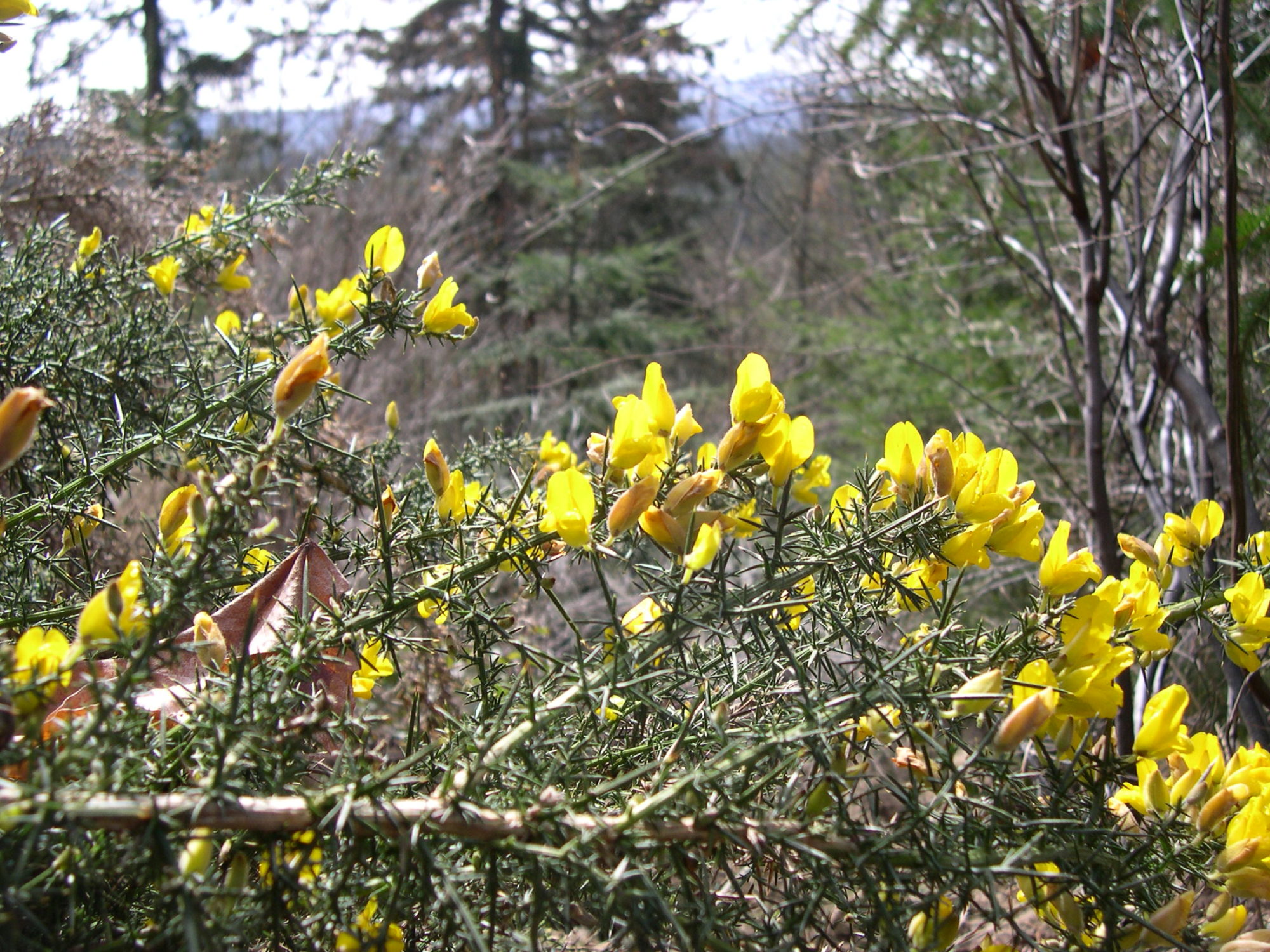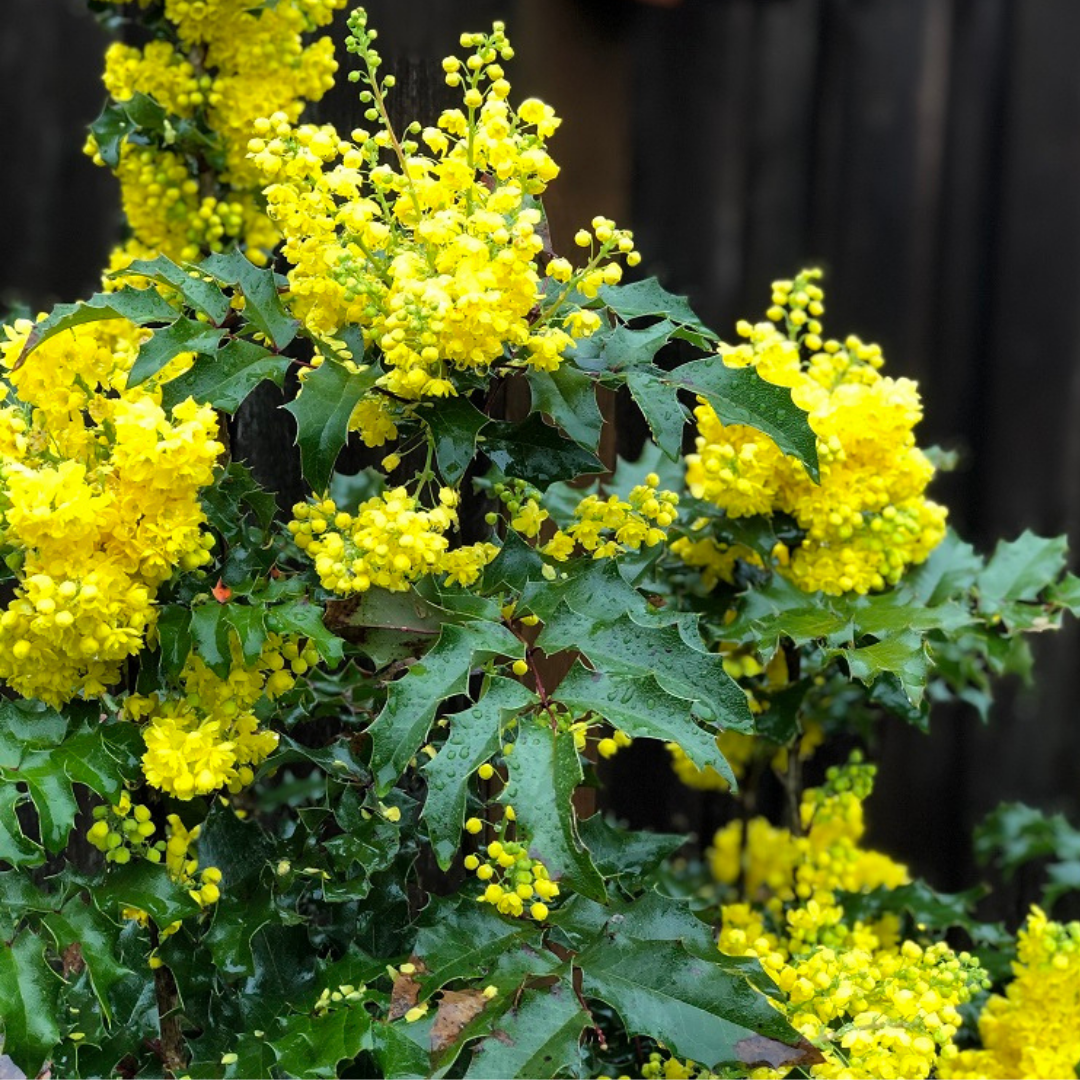Introduced species: Gorse (Ulex europaeus)
Characteristics: Gorse is a spiny, dense evergreen shrub in the pea family, typically 2-3 meters (6-9 ft) tall. Young branches are green, but turn brown with age. Leaves are stiff and needle-like, 5-15 mm (1/4-1/2 in) long; branch spines grow at the leaf axils, making gorse quite unfriendly. Yellow flowers bloom near the ends of branches on previous year’s growth, singly or in groups of two or three, mostly during late winter/early spring. These give way to pods 15-18 mm (1/2-5/8 in) in length, containing many shiny, olive-green or brown seeds.
Spread: Gorse is dispersed primarily by seed; once established, it grows outward, forming very dense thickets. The inner parts of these often turn brown with age. The abundance of this “dead” material, combined with the plant’s high oil content, makes it a major problem in areas prone to wildfires (the Oregon coast town of Bandon burned in a fire fueled largely by gorse in 1936).
Control: Manual control can be achieved by removing the entire plant, including the root system; this is best done when the soil is moist, and when plants are relatively small (less than 1 meter). Gorse will resprout from cut stems; nevertheless, removing the aboveground portion of the plant is often a necessary first step before digging out the root. Hoeing can be effective if large numbers of seedlings are present. The plant is best managed just before flowering to be sure it does not set seed.
Native Replacements: Tall Oregon grape (Mahonia aquifolium) is a native, evergreen shrub with striking yellow flowers and attractive foliage that would make an excellent substitute for gorse.


